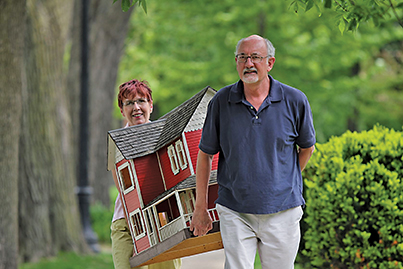Senior Housing Options
Posted on May 2, 2016 by bob in In Every Life
The term “Silver Tsunami” refers to the anticipated increase in older adults as the Baby Boom generation ages (the first Baby Boomers reached 65 in 2010). It is predicted that nearly half of all U. S. households will be headed by someone over the age of 55: empty-nesters, new retirees, grandparents, active seniors. Planning for relocation, downsizing, and eventual needs for supportive care environments options were presented in last month’s issue. More possibilities include:
1: Retirement and independent living communities: Older adults who are able to care for themselves may prefer stand-alone homes or apartment-style communities. Benefits include opportunities to share social activities and possibly access to contractual home health or supportive services if/when needs arise.
2: Dementia Villages are designed to allow people with some cognitive decline to shop, cook, and live together in a safe environment. Benefits are independence and normalcy with security from supervision by a trained staff.
3: Collaborative housing: This housing model can be intergenerational or for seniors only, with the key factor that residents actively participate in design and operation of the community. Consider for a moment what you would like if you and your friends were to design a community for your future years.
4: Multigenerational housing: Nearly a fifth of the U.S. currently has an adult, along with a parent, or a grandparent under one roof. The layout can be a traditional single family home, an “in-law” plan, a duplex or triplex, or other creative arrangement of space to meet the individual needs of all generations. Using universal design involves handles that do not require grasping, variable countertop heights, wide hallways and doors, ramps rather than steps to allow for assistive devices, or other modifications.
Modular construction or “med-cottages” are a version of “tiny houses” that can be placed adjacent to a caregiving family’s residence, or can be clustered together for one of the options listed above. Electronic or robotic “smart” features can provide for security with video phone systems to enable communication and telehealth, medication dispensing, telemetry, or to meet other individual needs. Additionally, the structure can be moved as circumstances change.
Nearly 40% of American adults are family caregivers, and expectations are that this will increase over the next years. Benefits are seen from inter-generational living, including potential for cost containment. Forward-thinking individual, family, community and public health planning can improve current approaches. “Aging friendly communities” can be responsive to needs of individuals and families across the lifespan.
Reference: Oklahoma Healthy Aging Initiative

Arlene H. Morris, EdD, RN, CNE is Professor of Nursing, Auburn Montgomery School of Nursing. Reach her at amorris@aum.edu.









